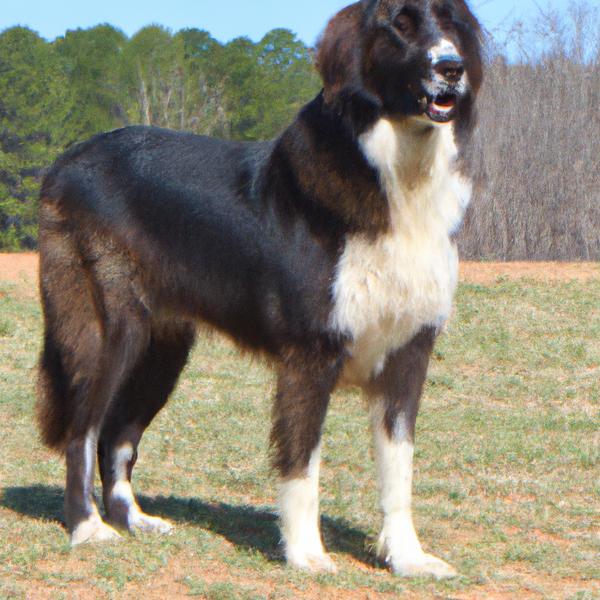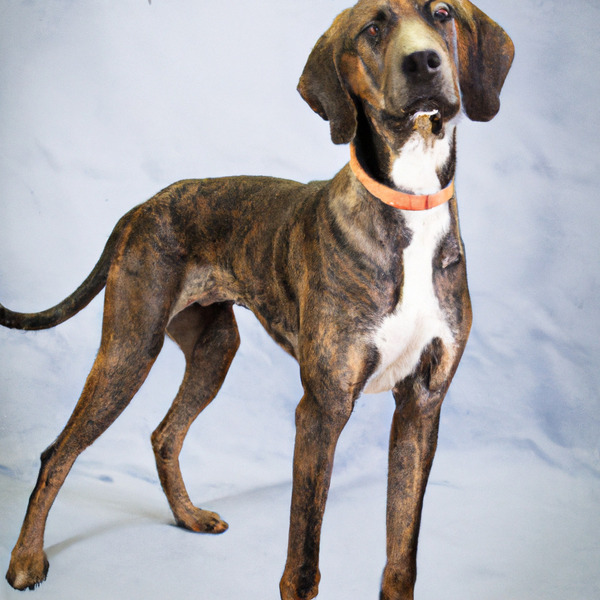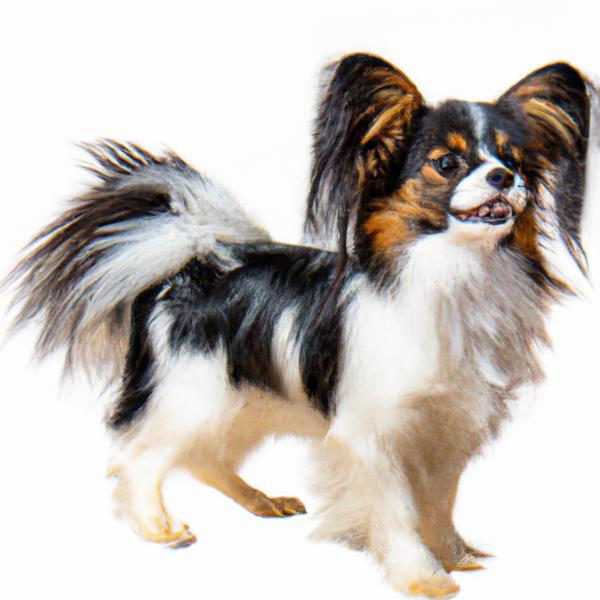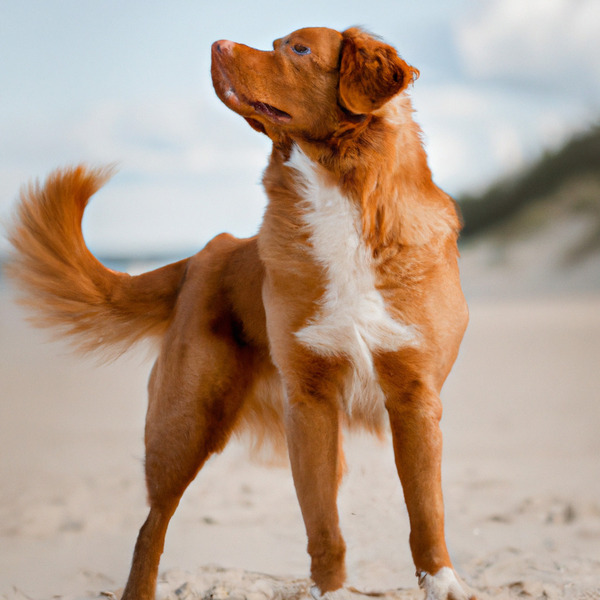Nova Scotia Duck Tolling Retriever vs. Schnorgi: Breed Differences and Similarities
Hypoallergenic
Are Nova Scotia Duck Tolling Retrievers or Schnorgis hypoallergenic, or neither?
Unfortunately, neither Nova Scotia Duck Tolling Retriever nor Schnorgi are hypoallergenic, which may not make them the best choice for dog lovers who suffer from pet allergies.
Temperament
What are the personalities of Nova Scotia Duck Tolling Retriever and Schnorgi dogs?
Affectionate
Courageous
Gentle
Responsive
Alert
Energetic
Playful
Playful
Intelligent
Friendly
Affectionate
Devoted
Lively
Going
Trainable
Good-natured
Cheerful
Shedding Level
Do Nova Scotia Duck Tolling Retrievers shed more than Schnorgis, or which breed sheds more, Nova Scotia Duck Tolling Retrievers or Schnorgis?
Nova Scotia Duck Tolling Retriever or Schnorgi dogs are not heavy shedders, but they will lose a significant amount of hair each year. To decrease the amount of shedding, you can regularly brush your Nova Scotia Duck Tolling Retriever or Schnorgi. This will remove loose hair and keep their coat growing in the same direction.
Ancestry
What are the origins of Nova Scotia Duck Tolling Retriever and Schnorgi breeds?
Cocker Spaniels, farm Collies, Irish Setters
Schnauzer, Corgi
Date of Birth
When were Nova Scotia Duck Tolling Retriever and Schnorgi breeds first developed?
19th Century
Unknown
Eye Color Possibilites
What are the eye colors of Nova Scotia Duck Tolling Retriever and Schnorgi dogs?
Hazel
Brown
Amber
Blue
Brown
Amber
Nose Color Possibilites
What are the natural nose colors of Nova Scotia Duck Tolling Retriever and Schnorgi?
Black
Brown
Black
Coat Color Possibilites
What are the natural colors of the coat for Nova Scotia Duck Tolling Retriever and Schnorgi breeds?
Red
Gray
Fawn
White
Black
Coat Length
What is the typical coat length for Nova Scotia Duck Tolling Retriever and Schnorgi breeds?
Nova Scotia Duck Tolling Retrievers have medium-length coats.
Schnorgis have coats that can be either short or medium in length.
Coat Density
What is the density of the coat of Nova Scotia Duck Tolling Retriever and Schnorgi?
Coat Texture
What is the hair texture of Nova Scotia Duck Tolling Retriever and Schnorgi?
Straight
Wiry
Litter Size
What is the usual litter size for Nova Scotia Duck Tolling Retriever and Schnorgi?
A Nova Scotia Duck Tolling Retriever can have a litter of 12-14 puppies on average. However, it's worth noting that the size of the litters can vary greatly. Factors that can influence litter size include the health of the mother, breeding history, and genetics.
A Schnorgi can have a litter of 4-8 puppies on average. However, it's worth noting that the size of the litters can vary greatly. Factors that can influence litter size include the health of the mother, breeding history, and genetics.
Adaptability
Nova Scotia Duck Tolling Retrievers are highly adaptable and versatile, making them excellent companions for families and individuals of all lifestyles.
Schnorgis are known for their adaptability and can adjust well to different environments and lifestyle changes.
Health Issues
Between Nova Scotia Duck Tolling Retriever and Schnorgi, which breed is more prone to health problems?
Nova Scotia Duck Tolling Retrievers typically have low vet costs due to their good health, but it's important to monitor their health and seek vet care when necessary.
Schnorgis are susceptible to health issues like all breeds, so it's important to monitor their health and seek veterinary care when needed.
Major Concerns
What are the major health concerns for Nova Scotia Duck Tolling Retriever and Schnorgi breeds?
Hip Dysplasia
Progressive Retinal Atrophy (PRA)
Glaucoma
Hip Dysplasia
Minor Concerns
What minor health issues should be kept in mind when owning Nova Scotia Duck Tolling Retriever and Schnorgi?
Collie Eye Anomaly (CEA)
Progressive Retinal Atrophy
Occasional Tests
What occasional tests are recommended for Nova Scotia Duck Tolling Retriever and Schnorgi breeds?
OFA
CERF
Hearing Tests
X-Rays
Physical Examination
Ultrasound
Radiographs
Ophthalmologic Examination
Electroretinogram
Social Needs
Nova Scotia Duck Tolling Retriever vs Schnorgi social needs comparison
Nova Scotia Duck Tolling Retriever and Schnorgi have above average social needs compared to other breeds. They thrive in environments where they have a lot of interaction with humans and other dogs.
Sleeping Need
Which of the two sleeps the most/least: Nova Scotia Duck Tolling Retriever or Schnorgi?
Nova Scotia Duck Tolling Retrievers are active and require sufficient sleep to stay healthy.
Schnorgis sleep less than other breeds but still need adequate sleep for good health.
Mouthiness
Mouthiness Comparison: Nova Scotia Duck Tolling Retriever vs Schnorgi?
Roaming urge
Nova Scotia Duck Tolling Retriever vs Labrador: Running away tendency?
Prey Drive
Nova Scotia Duck Tolling Retriever or Schnorgi - which breed has a higher level of prey drive?
Past times
What are some enjoyable activities and ways to keep Nova Scotia Duck Tolling Retriever and Schnorgi entertained?
Fetch, Bike ride, Dog Parks, Walk, Run
Playing, Cuddling, Car rides
Activity Level
Which breed has higher energy, Nova Scotia Duck Tolling Retrievers or Schnorgis?
Nova Scotia Duck Tolling Retriever and Schnorgi are high-energy dogs that require a lot of mental and physical exercise. Without proper stimulation and attention, these breeds can become problematic. If you're considering these breeds, be prepared to invest time and effort in their exercise and training.
Tolerance of being left alone
Walks per Week
How many miles should Nova Scotia Duck Tolling Retriever or Schnorgi walk each week?
There's really no limit to how far you walk your dog as long as they're comfortable. For Nova Scotia Duck Tolling Retriever, it's at least 10 miles / week. Just remember to build distance and stamina gradually over time.
There's really no limit to how far you walk your dog as long as they're comfortable. For Schnorgi, it's at least 8 miles / week. Just remember to build distance and stamina gradually over time.
Activity per Day
Do Nova Scotia Duck Tolling Retrievers or Schnorgis require more exercise?
Both Nova Scotia Duck Tolling Retriever and Schnorgi typically require a minimum of 60 minutes of exercise each day. The exercise can be spread throughout the day and may involve high-energy activities like walking, running, and playing.
Grooming
Which breed is easier to maintain in terms of grooming, Nova Scotia Duck Tolling Retrievers or Schnorgis?
The Nova Scotia Duck Tolling Retriever has low grooming needs and is easy to maintain.
Schnorgis require significant grooming, including regular trims and professional grooming assistance to maintain their coat. They may also require frequent bathing to keep their coat and skin healthy.
Brushing Frequency
What is the recommended brushing frequency for Nova Scotia Duck Tolling Retriever and Schnorgi dogs?
Nova Scotia Duck Tolling Retriever should be brushed at least once a week. Of course you can give them more frequent brushes if you find that they are still shedding a lot
Ideally, Schnorgi should be brushed at least 2 or 3 times a week (preferably daily) improve shedding.
Brushing Tools
What brushing tools are used for Nova Scotia Duck Tolling Retrievers and Schnorgis?
Pin Brush
Dematter
Comb
Nail Clipper
Pin Brush
Comb
Scissors
Nail Clipper
Cups
How much food should be given to Nova Scotia Duck Tolling Retriever or Schnorgi in cups?
For an average 44-51 pound (20 - 23 kg) Nova Scotia Duck Tolling Retriever feed 2.3 cups daily. But, keep in mind, the amount you feed is going to be dependent on the quality of the food you are feeding.
For an average 15-35 pound (7 - 16 kg) Schnorgi feed 1 cups daily. But, keep in mind, the amount you feed is going to be dependent on the quality of the food you are feeding.
Daily Cost
Which breed has a higher daily cost, Nova Scotia Duck Tolling Retriever or Schnorgi?
The average cost of a Nova Scotia Duck Tolling Retriever is somewhere $1.70 - $2.00 per day.
The average cost of a Schnorgi is somewhere $1.30 - $1.40 per day.
Monthly Cost
Which breed has a higher monthly cost, Nova Scotia Duck Tolling Retriever or Schnorgi?
The average per month expenses of a Nova Scotia Duck Tolling Retriever is between $48 - $63. This makes an average of $576 - $756 per year. It will be on the higher side when the dog is still small because it will need more frequent visits to the vet, shots.
The average per month expenses of a Schnorgi is between $35 - $42. This makes an average of $420 - $504 per year. It will be on the higher side when the dog is still small because it will need more frequent visits to the vet, shots.
Sensitivity Level
How do Nova Scotia Duck Tolling Retriever and Schnorgi compare in sensitivity?
Nova Scotia Duck Tolling Retrievers have average emotions and adapt well to different situations.
This breed is sensitive and requires gentle handling and a calm home environment.
Apartment Friendly
Which breed is more apartment-friendly: Nova Scotia Duck Tolling Retriever or Schnorgi?
Nova Scotia Duck Tolling Retrievers are good apartment dogs as long as they get enough exercise and stimulation outside of the apartment.
The Schnorgi is a great apartment dog, thriving with sufficient exercise and time outside as part of their daily routine.
Child Friendly
Do Nova Scotia Duck Tolling Retrievers or Schnorgis have a friendlier temperament towards children?
The typical characteristics of Nova Scotia Duck Tolling Retriever and Schnorgi indicate that this breed of dog is an ideal companion for kids and makes them family pets. Their gentle and protective nature and calm mentality make them gel along quickly with the younger humans.
Senior-friendly
Which dog is more suitable as a pet for the elderly - Nova Scotia Duck Tolling Retriever or Schnorgi?
Cat Friendly
Do Nova Scotia Duck Tolling Retriever or Schnorgi breeds have a better compatibility with cats?
Nova Scotia Duck Tolling Retrievers are average in their friendliness toward cats and tend to do well with them, especially if raised together.
Schnorgis are very friendly with cats and make great companions for them.
Dog Friendly
Which breed is more sociable with other dogs: Nova Scotia Duck Tolling Retriever or Schnorgi?
Nova Scotia Duck Tolling Retrievers are generally very friendly towards other dogs, with a happy and affectionate temperament.
Schnorgis are friendly and active companions, and can be good family pets, though their friendliness towards other dogs may vary.
Pet friendly
How do Nova Scotia Duck Tolling Retriever or Schnorgi dogs interact with other pets?
Stranger Friendly
Which breed is more friendly with strangers: Nova Scotia Duck Tolling Retriever or Schnorgi?
Nova Scotia Duck Tolling Retrievers are quick to announce strangers and can be standoffish or suspicious.
Schnorgis are averagely friendly around strangers but benefit from early socialisation.
Playfulness
Which breed is more playful between Nova Scotia Duck Tolling Retriever and Schnorgi?
Nova Scotia Duck Tolling Retriever and Schnorgi are known to be highly playful dogs. So if you're not up for all that, think about adopting slightly older Nova Scotia Duck Tolling Retriever and Schnorgi for a mellower experience.
Trainability
How do the trainability levels of Nova Scotia Duck Tolling Retrievers and Schnorgis compare?
Nova Scotia Duck Tolling Retriever and Schnorgi dogs are known for their ease of training and ability to learn quickly, making them a popular choice for pet owners and trainers alike.
Compare Nova Scotia Duck Tolling Retriever with other breeds

Mastapeake
Nova Scotia Duck Tolling Retriever vs Mastapeake

Belgian Tervuren
Nova Scotia Duck Tolling Retriever vs Belgian Tervuren

Hanover Hound
Nova Scotia Duck Tolling Retriever vs Hanover Hound

Plott Hound
Nova Scotia Duck Tolling Retriever vs Plott Hound

Cursset
Nova Scotia Duck Tolling Retriever vs Cursset

Italian Greyhound
Nova Scotia Duck Tolling Retriever vs Italian Greyhound

Miniature Ausseippet
Nova Scotia Duck Tolling Retriever vs Miniature Ausseippet

Yorkshire Terrier
Nova Scotia Duck Tolling Retriever vs Yorkshire Terrier

Jack Russell Terrier
Nova Scotia Duck Tolling Retriever vs Jack Russell Terrier

Schnorgi
Nova Scotia Duck Tolling Retriever vs Schnorgi

Engatzu Spaniel
Nova Scotia Duck Tolling Retriever vs Engatzu Spaniel

Cane Corxer
Nova Scotia Duck Tolling Retriever vs Cane Corxer
